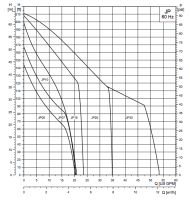Estrogen Hostage
New Member
I have a large house in the country with six bathrooms, and irrigation system, and eight of us living here. I have a city water connection that has a small meter. I have acceptable static water pressure but once I begin drawing higher demand the pressure drops to an unacceptable level. I have been told that a pressure tank will help with this but I would rather put a pump on to ensure that I can take a shower while doing laundry, irrigating the lawn, etc.
my question is about the pump set up. All of the advice I had found is to put a plastic tank in the basement and use a conventional jet pump so that I don’t put a suction on the incoming line. The second point is important to me because I have a small cabin and other outdoor irrigation and livestock watering attached to the water connection upstream of my house.
The part I don’t understand is about the tank before the pump. Putting in an unpressurized plastic tank and filling with the float valve seems like a good way to introduce contamination, so why not put in a similar sized pressurized air over water tank? It seems if I filled the tank in one port at the top and discharge from the bottom it would effectively Decouple the two systems, and at the times when the pump volume is higher than the meter flow the air pressure will just let the water level drop in the tank. Thing is that I can find no information about such a set up online. I already own the pump and bladder tank but I don’t really want to spend money not knowing if such a system will work like I’m expecting.
I believe the biggest risk would be that the demand could still be greater than the meter flow but I’m sure there is some type of switch I could put in the tank to shut the pump off if it runs all the way down.
my question is about the pump set up. All of the advice I had found is to put a plastic tank in the basement and use a conventional jet pump so that I don’t put a suction on the incoming line. The second point is important to me because I have a small cabin and other outdoor irrigation and livestock watering attached to the water connection upstream of my house.
The part I don’t understand is about the tank before the pump. Putting in an unpressurized plastic tank and filling with the float valve seems like a good way to introduce contamination, so why not put in a similar sized pressurized air over water tank? It seems if I filled the tank in one port at the top and discharge from the bottom it would effectively Decouple the two systems, and at the times when the pump volume is higher than the meter flow the air pressure will just let the water level drop in the tank. Thing is that I can find no information about such a set up online. I already own the pump and bladder tank but I don’t really want to spend money not knowing if such a system will work like I’m expecting.
I believe the biggest risk would be that the demand could still be greater than the meter flow but I’m sure there is some type of switch I could put in the tank to shut the pump off if it runs all the way down.

